Abstract
Examination of factors affecting the resistance of Lactobacillus acidophilus NCFM culture concentrates to freeze injury induced during frozen storage at -20°C revealed that calcium supplementation of the growth medium contributed to the storage stability of cells prepared in static culture. Culture concentrates of L. acidophilus NCFM were prepared from cells propagated in MRS broth or MRS broth supplemented with 0.1% calcium carbonate, calcium chloride, or calcium phosphate. After 28 days of frozen storage at -20°C, concentrated cells (3.2 × 109 colony-forming units per ml) prepared from MRS broth cultures showed an 84% reduction in viable cells. Of the remaining viable cells, 88% were sublethally injured and unable to form colonies on MRS agar supplemented with 0.15% bile. Cells prepared in calcium-supplemented MRS broths demonstrated more resistance to frozen storage. Viability and injury losses in the frozen concentrates were limited to 10 to 39% and 3 to 23%, respectively. It was observed that calcium supplementation of MRS medium resulted in a morphological transition of L. acidophilus NCFM from filamentous to bacilloid rods, and the bacilloid cells were more resistant to freezing and storage at conventional freezer temperatures. The results suggest that the morphology of the L. acidophilus cell may be an important consideration in the preparation of freeze-stable culture concentrates.
Full text
PDF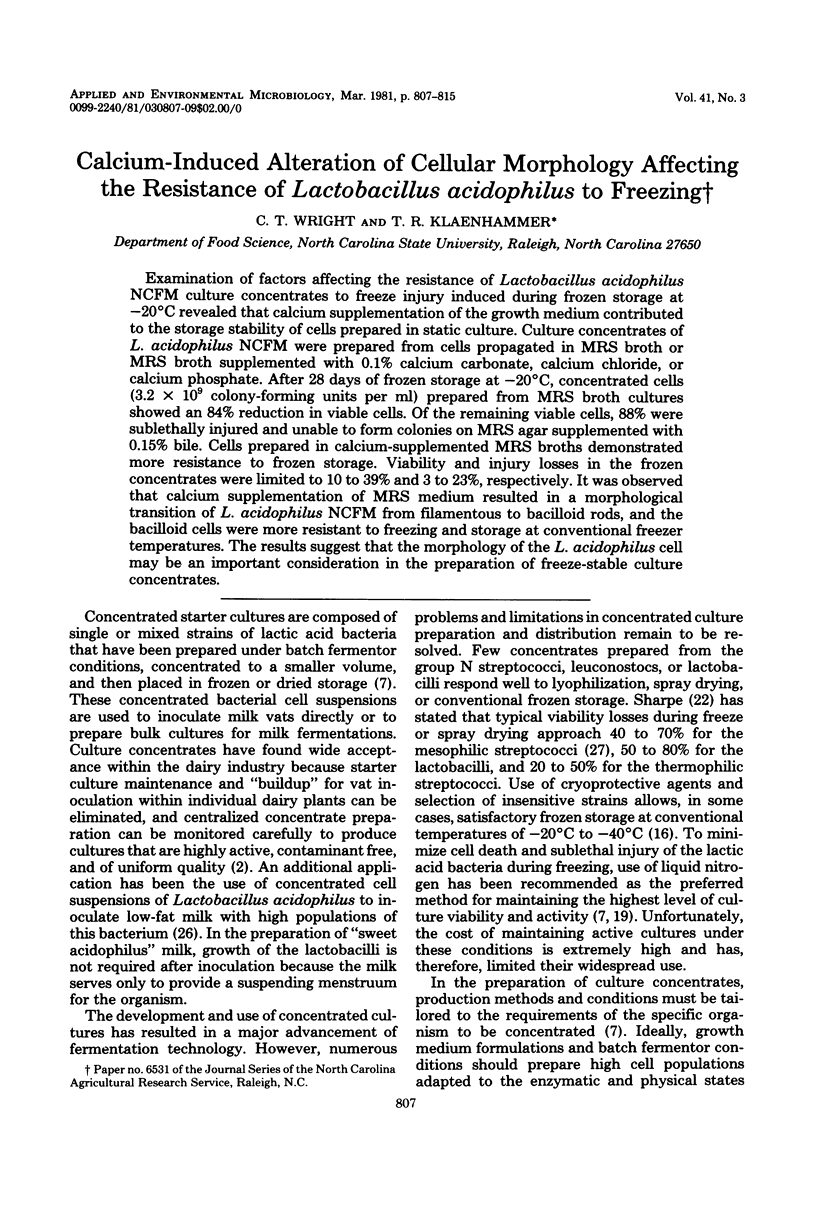
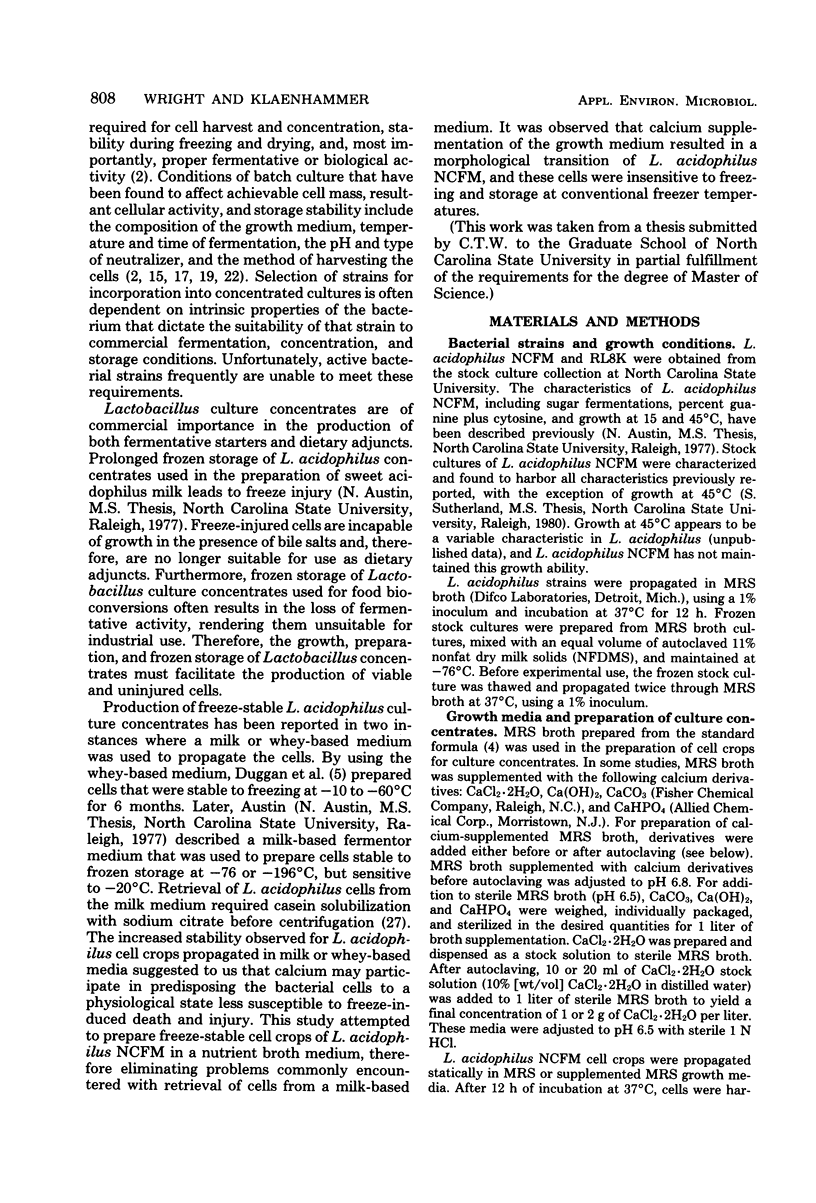
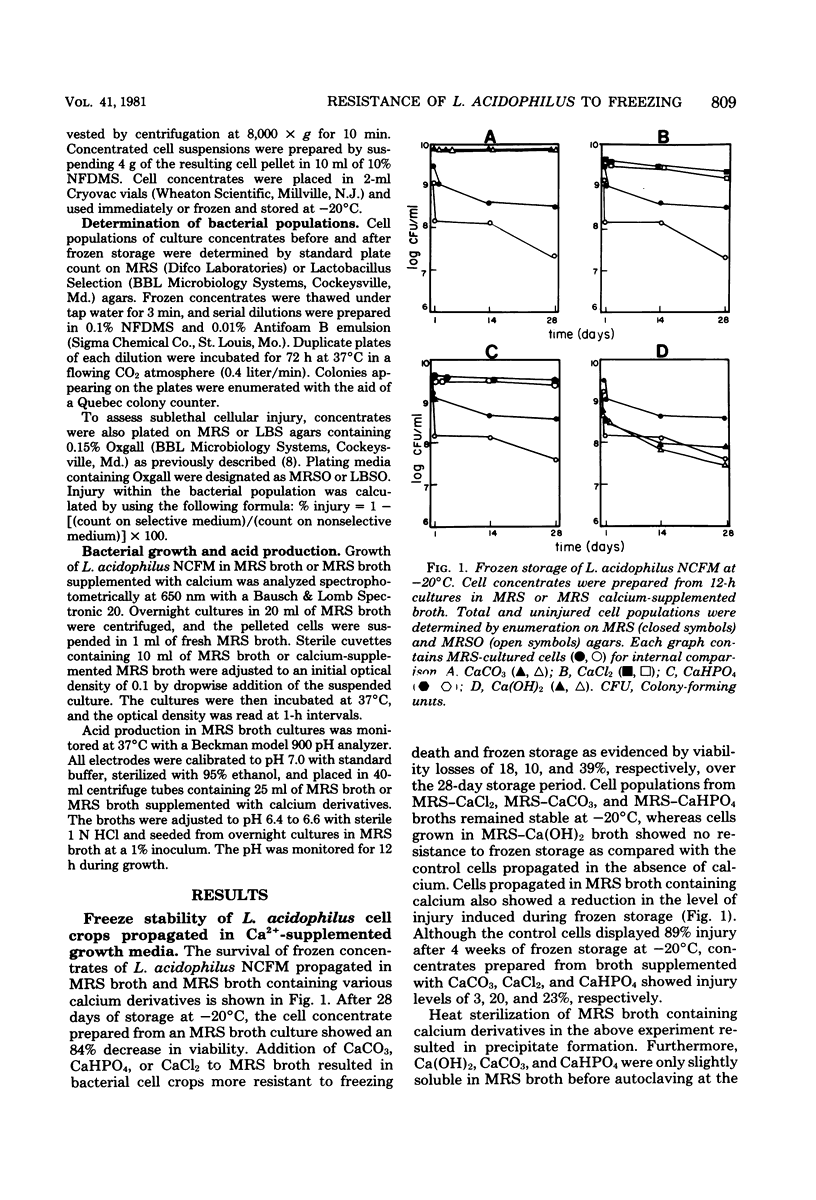
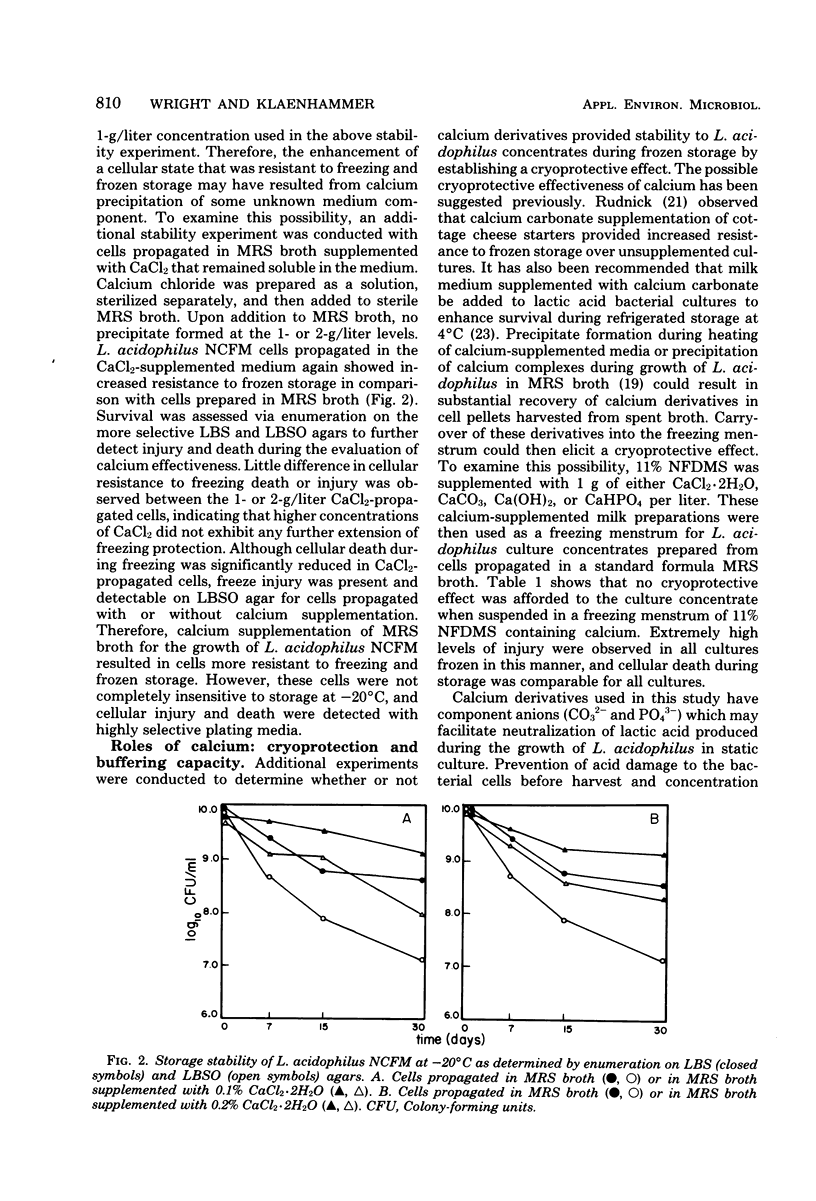

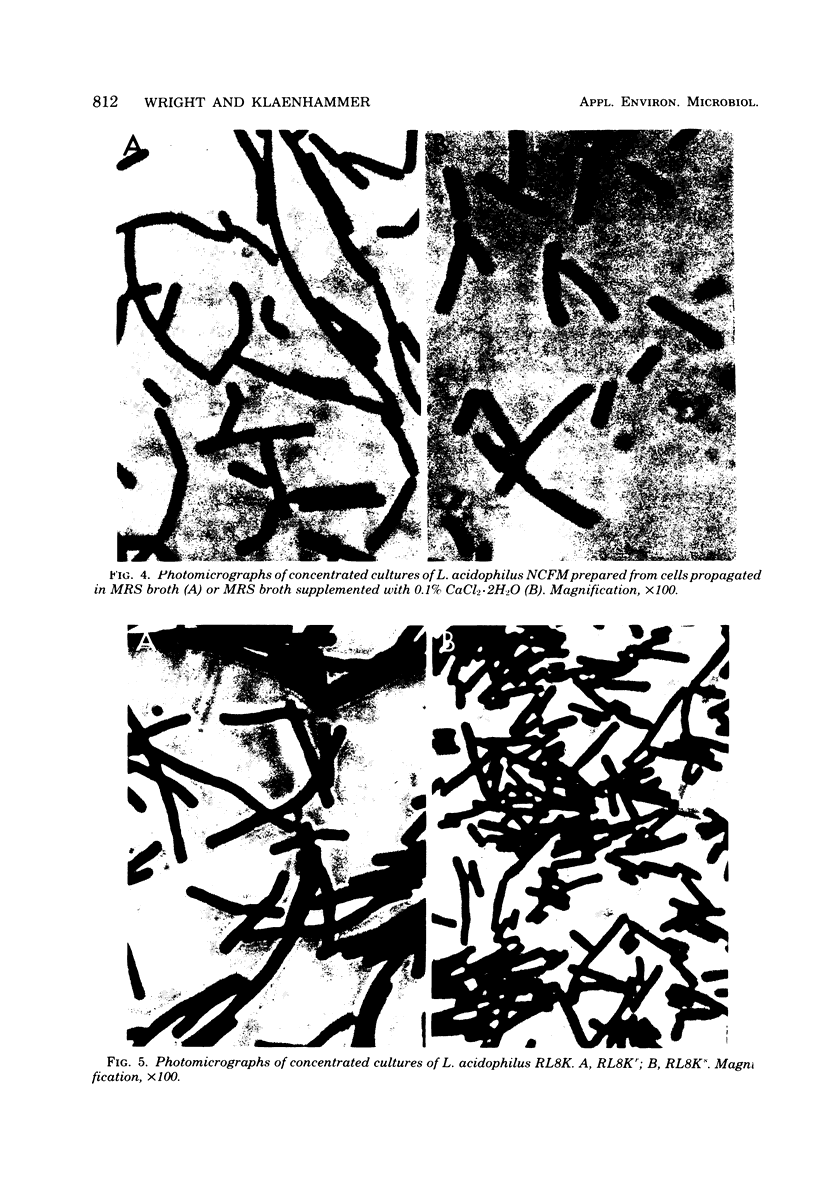
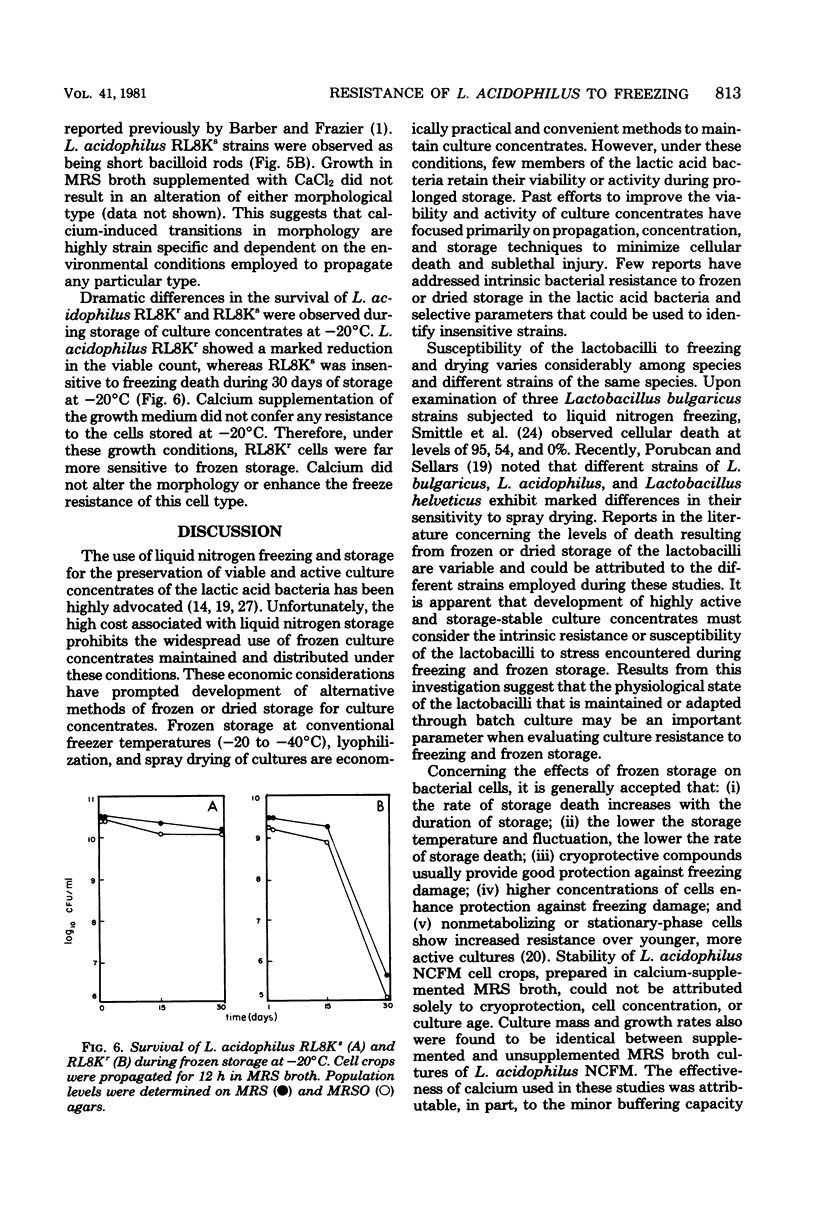

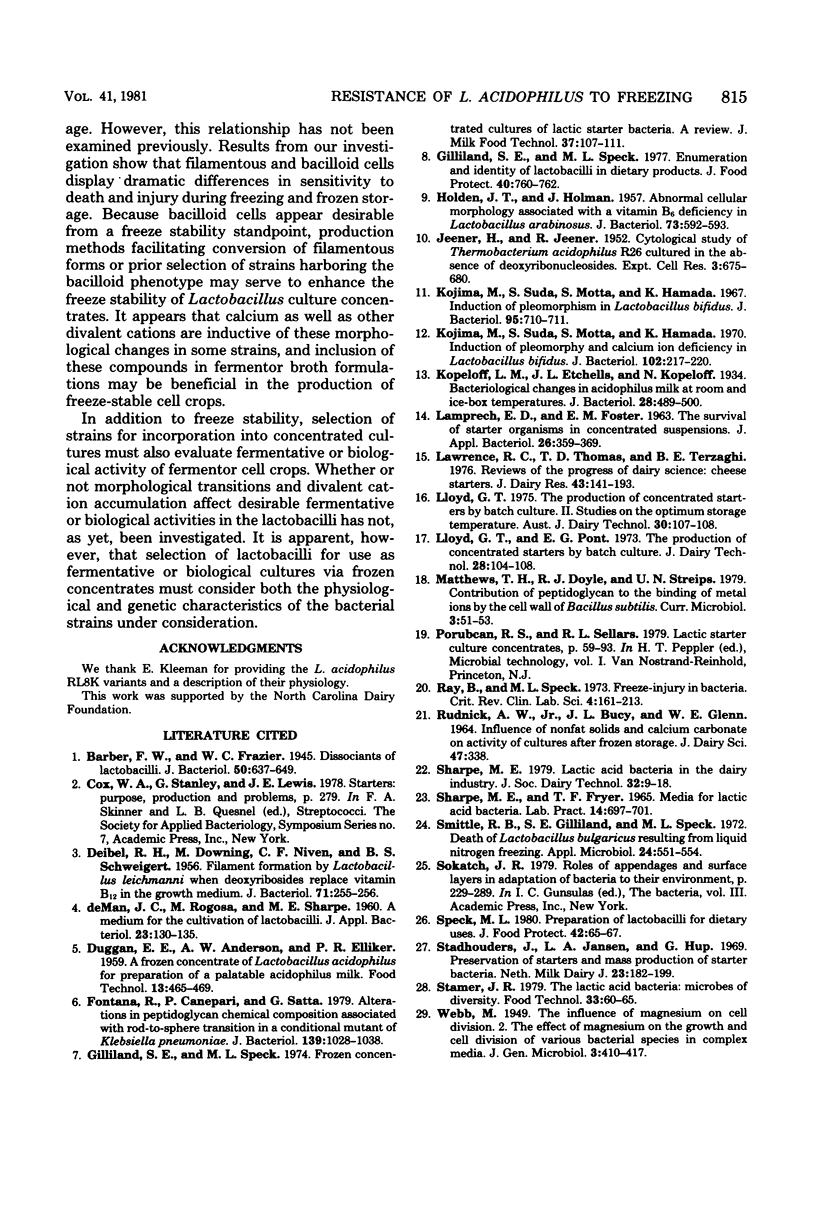
Images in this article
Selected References
These references are in PubMed. This may not be the complete list of references from this article.
- Barber F. W., Frazier W. C. Dissociants of Lactobacilli. J Bacteriol. 1945 Dec;50(6):637–649. [PMC free article] [PubMed] [Google Scholar]
- DEIBEL R. H., DOWNING M., NIVEN C. F., Jr, SCHWEIGERT B. S. Filament formation by Lactobacillus leichmannii when desoxyribosides replace vitamin B12 in the growth medium. J Bacteriol. 1956 Feb;71(2):255–256. doi: 10.1128/jb.71.2.255-256.1956. [DOI] [PMC free article] [PubMed] [Google Scholar]
- Fontana R., Canepari P., Satta G. Alterations in peptidoglycan chemical composition associated with rod-to-sphere transition in a conditional mutant of Klebsiella pneumoniae. J Bacteriol. 1979 Sep;139(3):1028–1038. doi: 10.1128/jb.139.3.1028-1038.1979. [DOI] [PMC free article] [PubMed] [Google Scholar]
- HOLDEN J. T., HOLMAN J. Abnormal cellular morphology associated with a vitamin B6 deficiency in Lactobacillus arabinosus. J Bacteriol. 1957 Apr;73(4):592–593. doi: 10.1128/jb.73.4.592-593.1957. [DOI] [PMC free article] [PubMed] [Google Scholar]
- Kojima M., Suda S., Hotta S., Hamada K. Induction of pleomorphism in Lactobacillus bifidus. J Bacteriol. 1968 Feb;95(2):710–711. doi: 10.1128/jb.95.2.710-711.1968. [DOI] [PMC free article] [PubMed] [Google Scholar]
- Kojima M., Suda S., Hotta S., Hamada K. Induction of pleomorphy and calcium ion deficiency in Lactobacillus bifidus. J Bacteriol. 1970 Apr;102(1):217–220. doi: 10.1128/jb.102.1.217-220.1970. [DOI] [PMC free article] [PubMed] [Google Scholar]
- Kopeloff L. M., Etchells J. L., Kopeloff N. Bacteriological Changes in Acidophilus Milk at Room and Ice-Box Temperatures. J Bacteriol. 1934 Nov;28(5):489–500. doi: 10.1128/jb.28.5.489-500.1934. [DOI] [PMC free article] [PubMed] [Google Scholar]
- Ray B., Speck M. L. Freeze-injury in bacteria. CRC Crit Rev Clin Lab Sci. 1973 Aug;4(2):161–213. doi: 10.3109/10408367309151556. [DOI] [PubMed] [Google Scholar]
- Smittle R. B., Gilliland S. E., Speck M. L. Death of Lactobacillus bulgaricus Resulting from Liquid Nitrogen Freezing. Appl Microbiol. 1972 Oct;24(4):551–554. doi: 10.1128/am.24.4.551-554.1972. [DOI] [PMC free article] [PubMed] [Google Scholar]




